Standing in the middle of the vast, shimmering silver-white salt pans of northeastern Botswana, it’s extraordinary to imagine the Makgadikgadi Pans under water.
But about 20,000 years ago, the Kalahari Desert was mostly lake. It dried up nearly 10,000 years ago, leaving the world’s largest salt pans. They are a unique wilderness with dramatic seasonal transformations from dry, saline flats to vibrant wetland, and offer some unique experiences.
Through these changes, they host one of Africa’s great migrations as tens of thousands of zebras – of course followed by predators – go in an annual search for water from the Boteti River. And when wet, they host one of the biggest breeding colonies of greater flamingos.
The Makgadikgadi Pans are spectacular during the day, an otherworldly, almost transformational experience. But they truly come alive at night, when the clear air and lack of light pollution make for astounding stargazing. A sleepout in the pans is a special experience.
Makgadikgadi is divided into Makgadikgadi National Park and Nxai National Park, and each has multiple salt pans. The main ones are Sowa in the south, where the flamingos breed, Ntwetwe in the middle, and Nxai in the north, where the Baines’ Baobabs are.
Why You Should Go to Makgadikgadi National Park
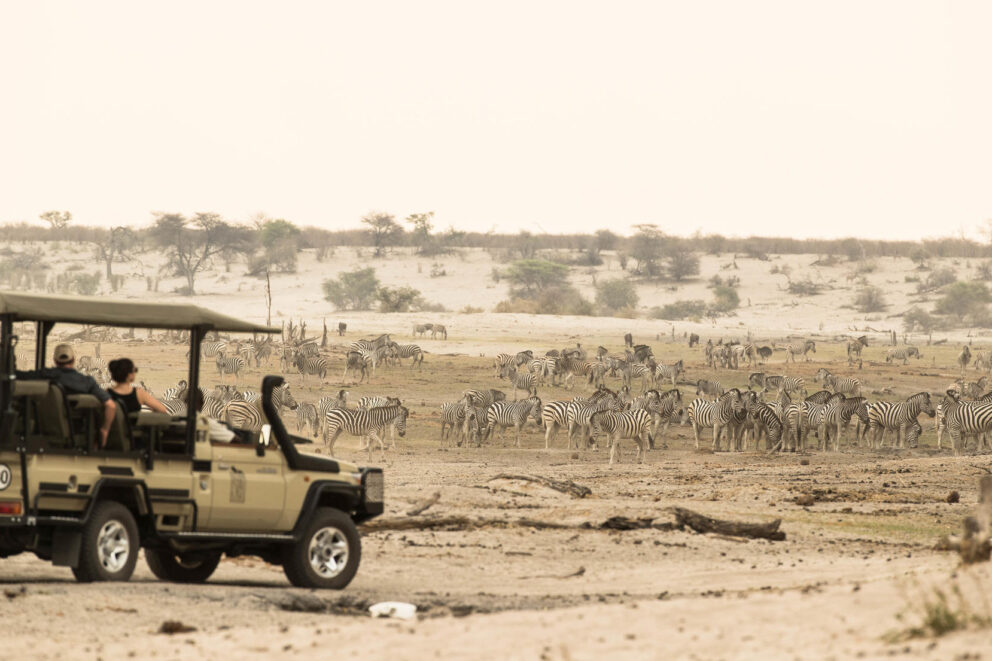
- Wildlife: There are thousands of zebras, wildebeest, and other herbivores, along with predators, creating one of Africa’s most dramatic wildlife migrations.
- Stargazing: With no light pollution, the stars are clear in a huge, pristine sky, giving a profound sense of timelessness, vastness, and silence.
- Culture: the Zu/’hoasi, who’ve inhabited the region for thousands of years, offer unique insights into survival in the desert environment and can be your guides on foot for a deep cultural and natural experience.
- Ancient history: The Makgadikgadi Pans are rich in archaeological sites with evidence of human habitation dating back to the Early Stone Age.
- Photography: The surreal and ever-changing landscapes, from stark white plains to vibrant green wetlands and a star-filled sky, offer spectacular photographic opportunities.
When to Go
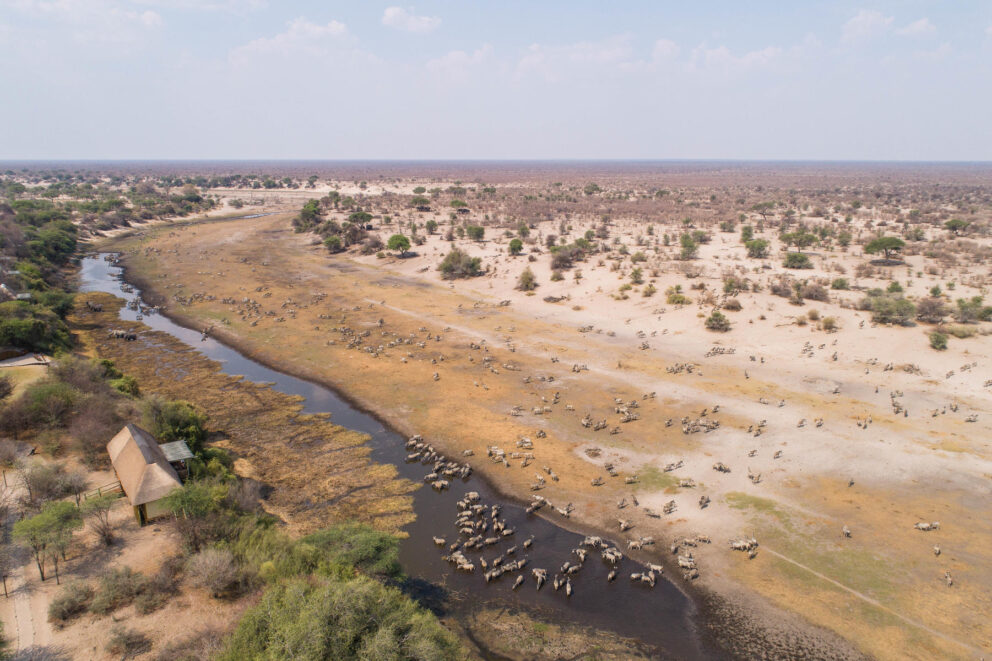
The zebra migration in Botswana begins when the rains start to fall, usually around the end of November to early December, when thousands of zebras gather to graze on nutrient-rich grasses.
In the wet season (typically November to March), the Makgadikgadi National Park transforms from a dry salt crust into a lush, green wetland that attracts many migratory birds, making for a birdwatcher’s paradise, so remember to bring your binoculars and telephoto lenses.
During the dry season (April to October), the temperatures are mild and the pans turn into a vast, shimmering expanse. Wildlife congregates around the remaining waterholes, giving fantastic wildlife sightings. It’s the best time to see the unique desert-adapted wildlife in action.
This season includes sunny and warm daylight hours, but the nights are cold – pack for any eventuality. It’s windy from August to November. October is the hottest month and the wildebeest and zebra migrate slowly from the pans in the southeast of the park towards the Boteti River on the western side.
What to See
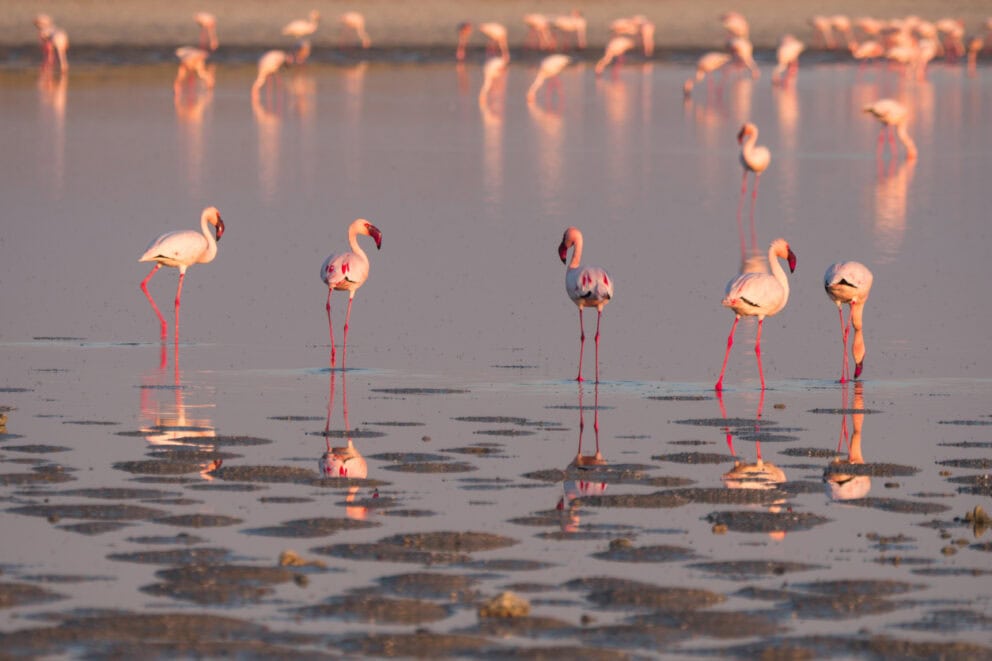
Massive flocks of flamingos come for the sheets of water that cover the northeastern section of the Makgadikgadi alongside a phenomenal marvel of other water birds. The arrival of this water stimulates the birth of millions of tiny shrimps and other crustaceans otherwise lying dormant below the white salt crust, making for one of Africa’s largest avian feasts. Also look for:
- Elephants
- Lions
- Aardvark, a nocturnal creature that feeds on termites
- Brown hyena, an elusive scavenger
- Spring hare, with its long hind legs and upright ears
- Springbok, gemsbok, wildebeest, duiker, and bushbuck
- Meerkats – a few family groups have been habituated and you can spend some time watching their social dynamics and playful antics.
What to Do
For the adventurous, helicopter flips and quad biking across the vast expanse of dry salt pans are some of the highlights of visiting the Makgadikgadi Pans National Park. But if you want to go more natural, horse riding is also available.
There are also game drives, birdwatching, and tours of the village of Gweta, an agriculture and local culture hub where you can listen to traditional storytelling.
Where to Stay in Makgadikgadi Pans
Jack’s Camp
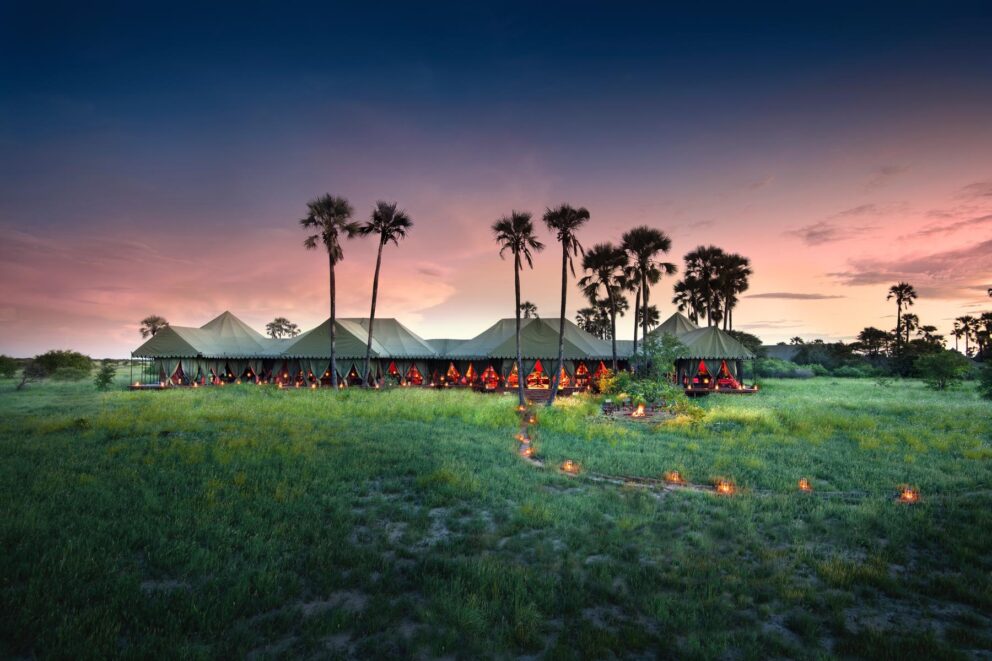
Jack’s Camp Botswana is an oasis of style and comfort in the middle of Botswana’s Kalahari Desert.
What it Offers
- Nine tents (seven twins, two doubles), each with an expansive deck with a private plunge pool, an en-suite bathroom with indoor and outdoor showers, and an over-bed cooling system.
- Pool, wellness and spa treatments, Persian tea tent, library, antique pool table.
- 100% solar-powered.
Activities
- Meerkat encounters
- Bushman walks
- Game drives and night drives
- Helicopter flips
- Quad biking
- Horse riding safaris
The activities combine wildlife with culture, history, archaeology, and geology, so something for all. You can also visit Chapman’s Baobab, one of the oldest and biggest trees in Africa.
What’s Special About Jack’s Camp
Jack’s Camp is a Kalahari Legend, known for setting the standard for luxury in the desert for several decades. It’s in a much-loved vintage style, with rich textiles, Persian rugs, and cabinets of curiosities.
Spectacular vistas, creative surprises, expert guiding, old-world safari styling, and superb cuisine together create an experience that is entirely different from any other.
The camp offers unfathomable comfort for desert life. And it’s the ultimate in space and exclusivity as one of just three camps in a 405,000ha private wildlife reserve.
Camp Kalahari
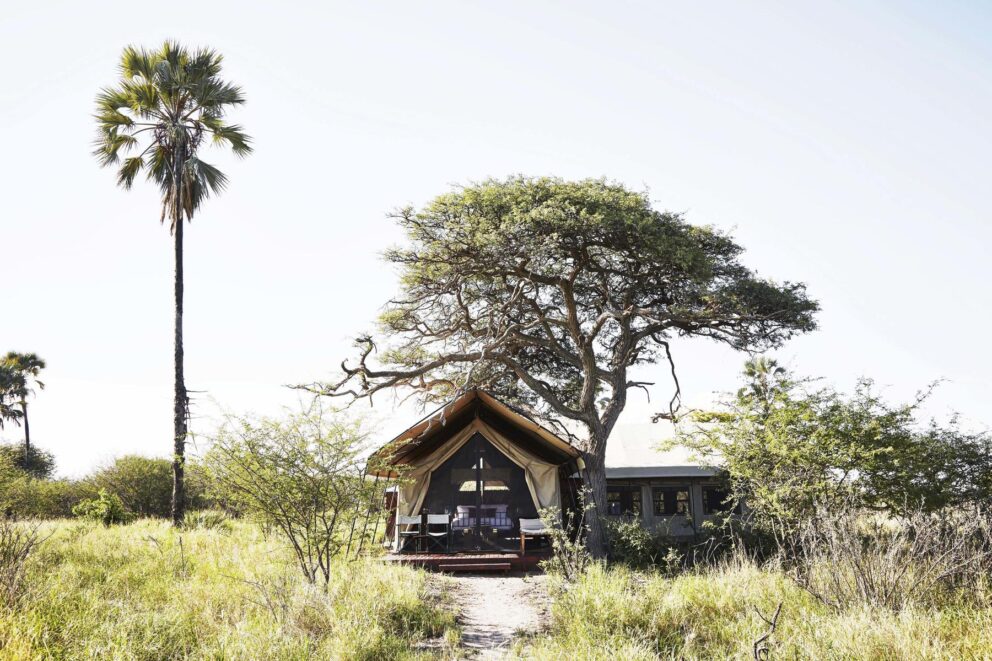
Camp Kalahari, on the edge of Botswana’s Makgadikgadi pans, next to the Makgadikgadi National Park and Nxai Pan National Park, is set among the palms and acacia trees of Brown Hyena Island.
What it Offers
- 12 meru-style tents, including interconnecting family tents
- Understated, simple style
- Perfect for families, groups, and couples; children of all ages welcome
- Swimming pool, library, and Wi-Fi
Activities
- Quad bike adventures across the salt pans
- Walks with the Zu’/hoasi bushmen
- Game drives and night drives
- Horse riding safaris
- Meerkat encounters
What’s Special About Camp Kalahari
The focus is on family-friendly safari adventure, but still with lashings of comfort and style. You may meet the habituated meerkat family, who enjoy using unsuspecting guests as lookout points.
It’s an ideal base for discovering the magical landscape of the desert and Makgadikgadi pans. And it’s one of only three camps in a 405,000ha concession.
San Camp
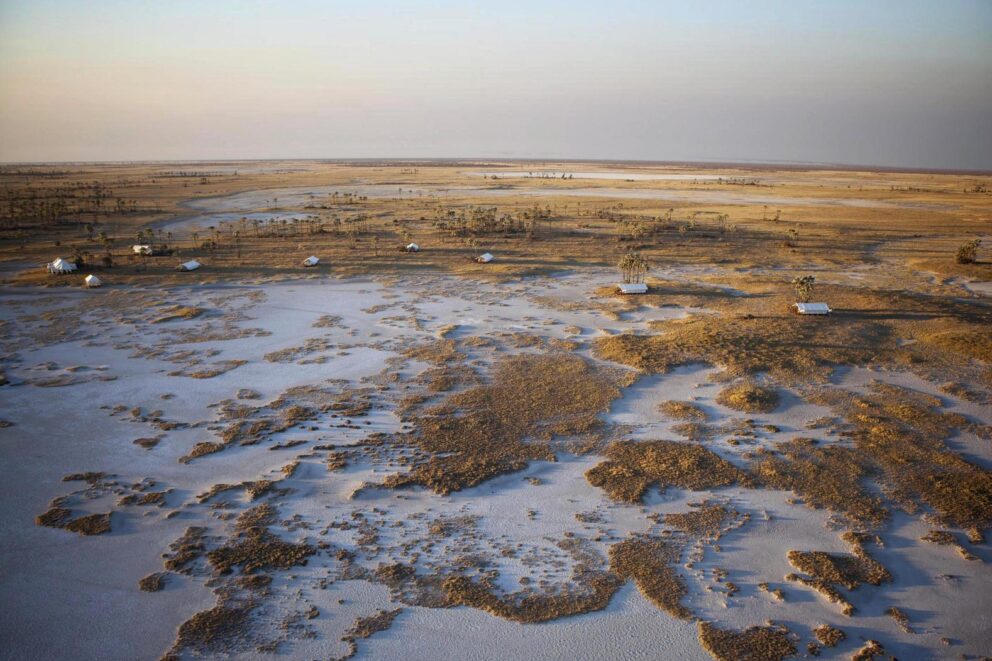
San Camp is on the edge of Nwetwe Pan in the Makgadikgadi pans.
What it Offers
- Seven rooms (four twins, two doubles, one family) in beautiful, billowing white tents
- It has four-poster beds draped in cotton, mahogany writing desks, and leather armchairs; en-suite bathrooms with indoor solar-heated showers
- Swimming pool, wellness and spa treatments, library, and Wi-Fi
Activities
- Yoga
- Game drives and night drives
- Meerkat encounters
- Bushman walks
- Quad biking
- Horse riding safaris
- Helicopter safaris
What’s Special about San Camp
It’s known for its elegance and romance, with a classic white tent aesthetic. The magic is in the minimalism, offering a remote world free from modern screens.
The 360-degree panoramas are so vast, you can see the curvature of the Earth. San Camp is only open from April to October (dry season), the only time Nwetwe Pan is accessible.
Meno a Kwena
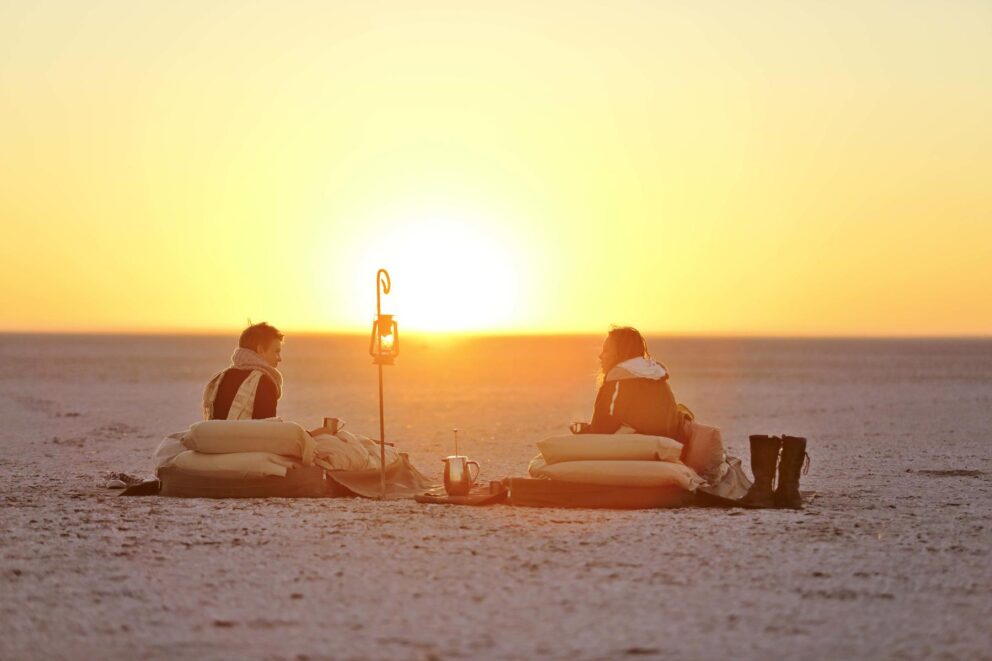
Meno a Kwena is perched on a rocky clifftop above the Boteti River, on tribal land on the western boundary of the Makgadikgadi Pans National Park.
What it Offers
- 10 classic tents, including two family units with inter-leading tents
- Family-friendly and a great value for money option
- Swimming pool, wellness and spa treatments, Wi-Fi in rooms only
Activities
- Day trips to the Makgadikgadi pans
- Sleepouts on the Makgadikgadi pans
- Guided walks with the San bushmen
- Wildlife-watching boat trips
- Game drives
- Guided nature walks
What’s Special About Meno a Kwena
For the more sedate traveller, there is excellent armchair game viewing from its lofty position above the Boteti River, often from your private verandah or the swimming pool.
And for the photographers, there is a photographic hide on the Boteti River, a year-round magnet for wildlife, giving a water-level vantage point for close-range wildlife viewing.
The camp’s position is said to be the best spot in the area for migration viewing, specifically when tens of thousands of zebra arrive at the river as the pans dry from April onwards. Meno a Kwena translates as “teeth of the crocodile”.
Leroo La Tau
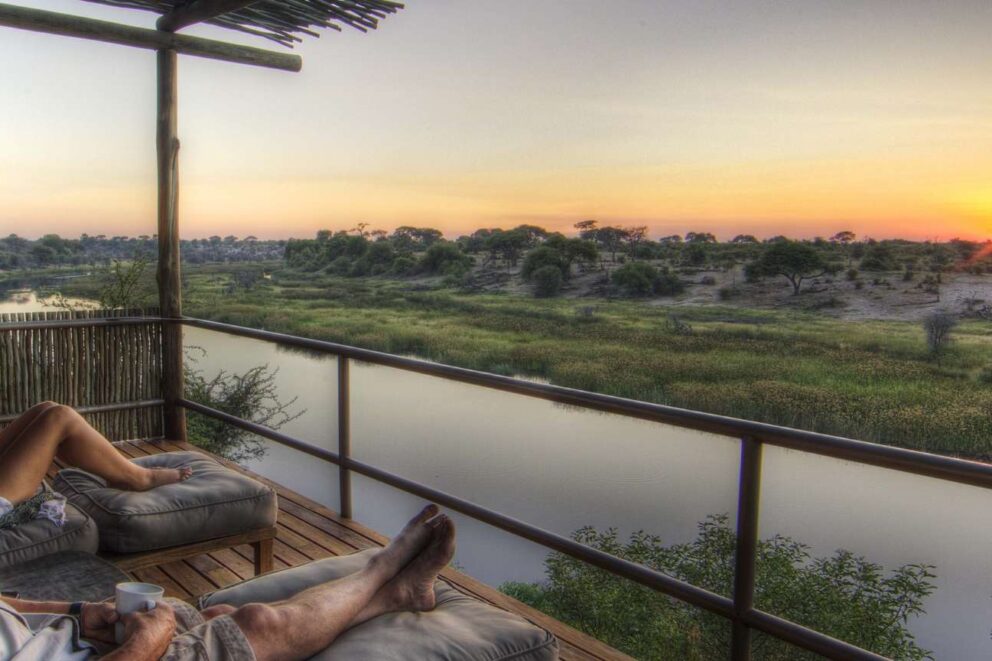
Leroo La Tau is on the western bank of the Boteti River.
What it Offers
- 12 luxurious thatched and glass-fronted suites (11 chalets and one family suite) on raised wooden platforms
- Accepts children from six years and older
- Swimming pool
- Camp hide (built into the bank of the river)
- Wi-Fi in rooms but constant connectivity is not guaranteed
Activities
- Game drives
- Cultural excursions to the nearby Khumaga village
- Boat safaris (seasonal, depending on water levels)
- Salt pans sleep out
- Nxai Pans day trips
What’s Special About Leroo La Tau
It’s right on the Boteti River, which is a critical link in the annual zebra migration and a lifeline for wildlife in the arid national park.
You have stunning views over the river from your chalet, and the camp hide is a unique vantage point at water level for viewing wildlife.
Leroo La Tau translates as “lion’s paw”.
Nxai Pan Camp
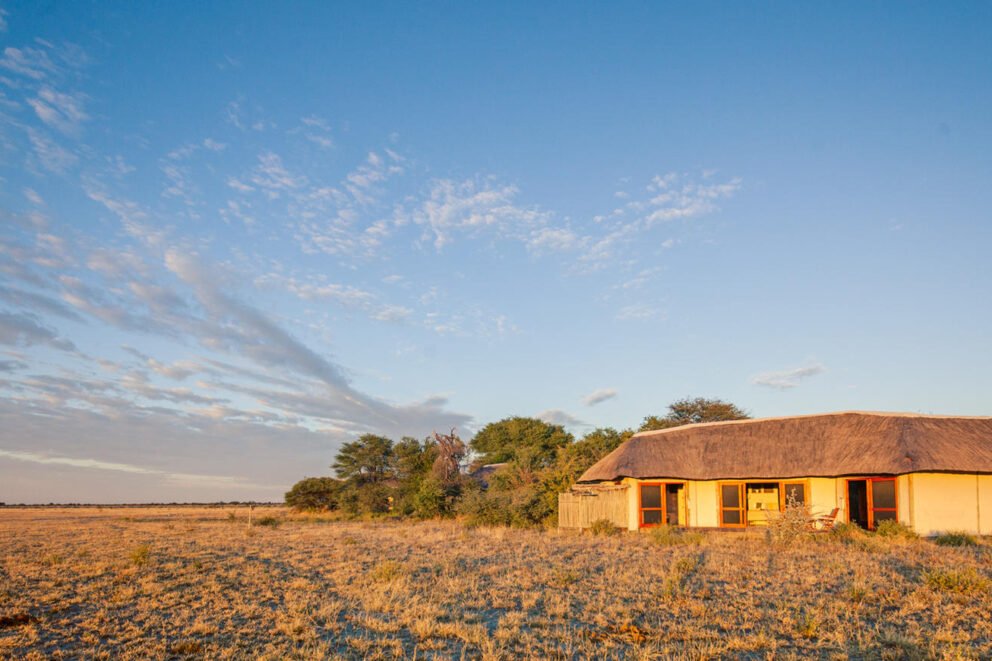
Nxai Pan Camp is a little further away, in Nxai Pan National Park, in the Makgadikgadi Pans network.
What it Offers
- Eight suites and one family suite, airy rooms under thatch
- Private viewing deck with a clear view of the waterhole
- Spacious lounge areas
- Swimming pool with waterhole views
- Limited Wi-Fi
Activities
- Game drives
- Bushman walks, learning San survival skills, medicinal plant lore
- Visits to Baines’ Baobabs
- Helicopter safaris
What’s Special About Nxai Pan Camp
It’s the only permanent camp in the Nxai Pan National Park, and is in an ideal spot for witnessing the zebra migration between December and March. But you are also treated to views of elephants drawn to the waterhole.
Book Your Makgadikgadi Pans Stay
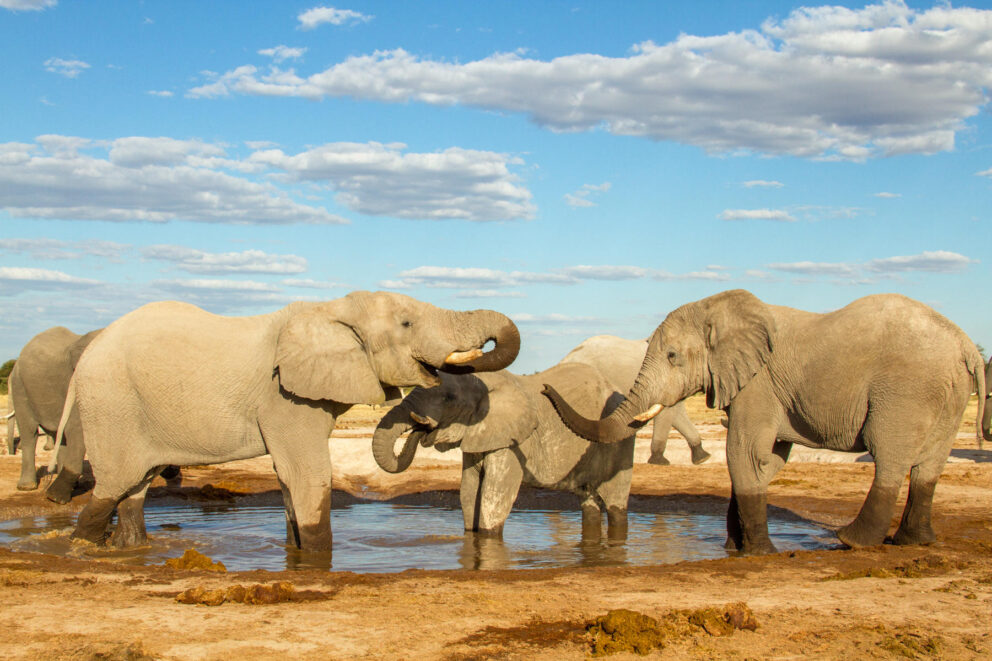
Makgadikgadi is the perfect destination if you’re looking for something a little more off-the-beaten-track during an authentic Botswana safari. Browse our tours or get in touch and we’ll create the trip that’s perfect for you.






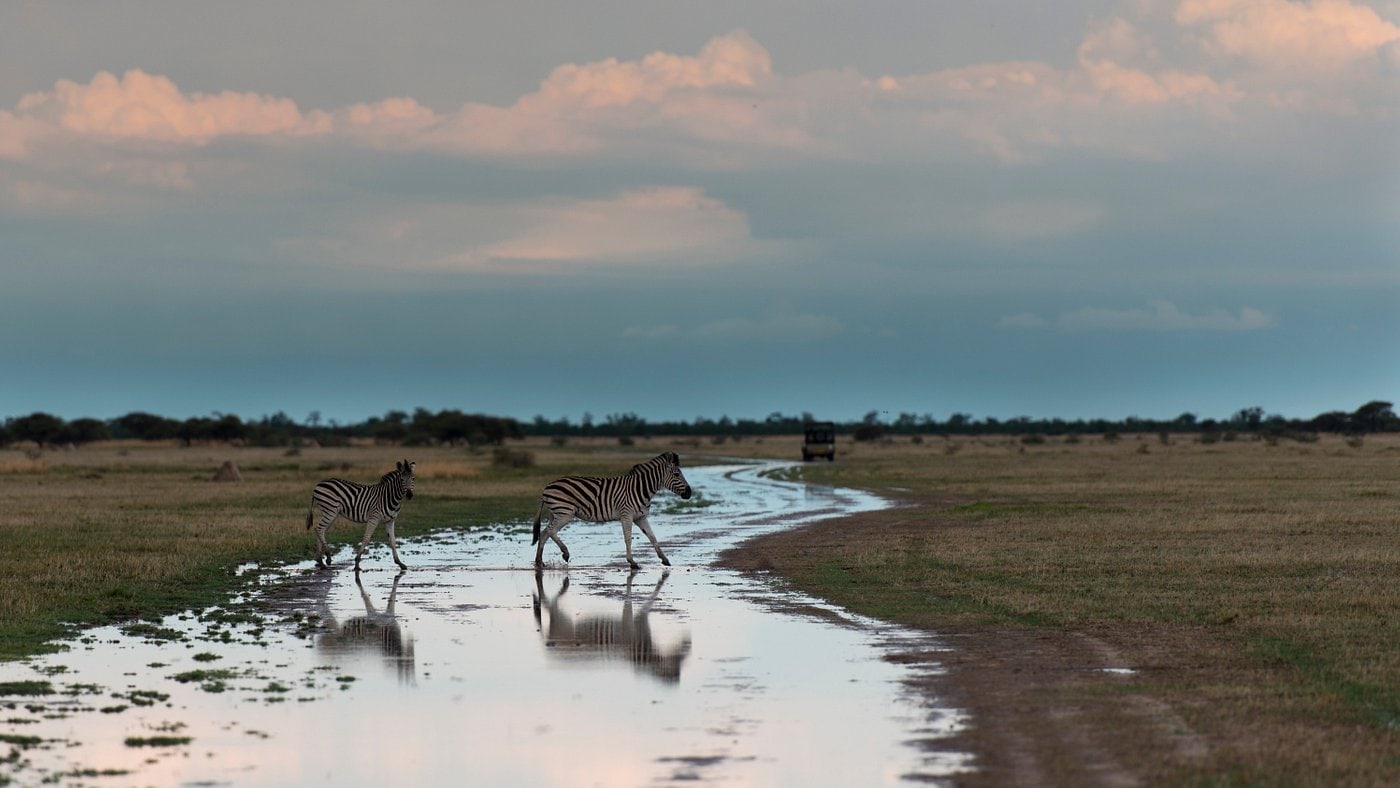

 Copy Link
Copy Link
 Share on LinkedIn
Share on LinkedIn
 Share on Facebook
Share on Facebook
 Blog List
Blog List

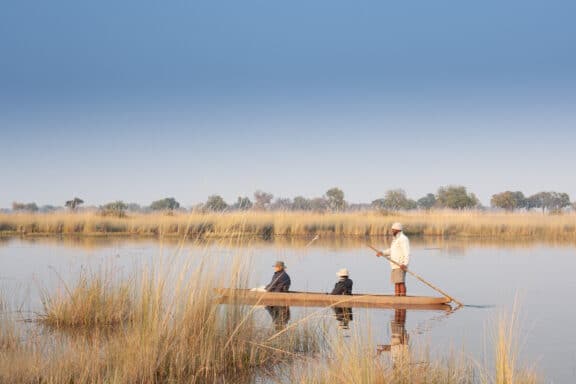
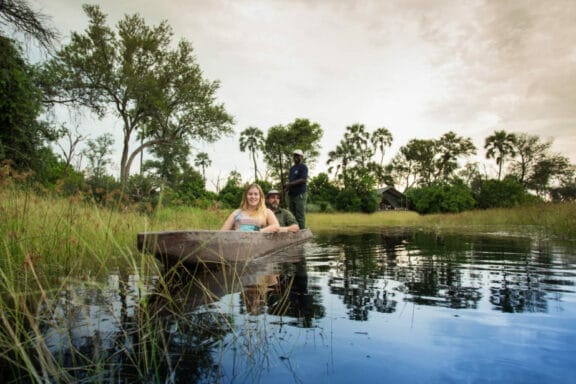
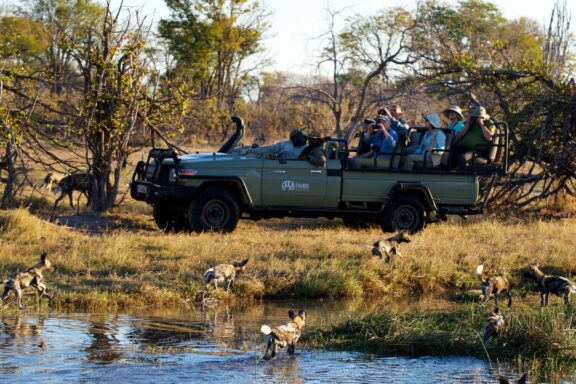
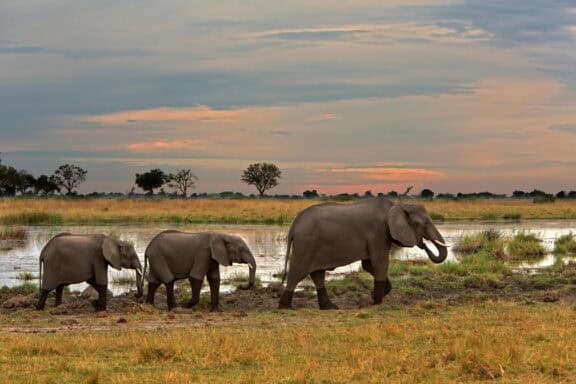

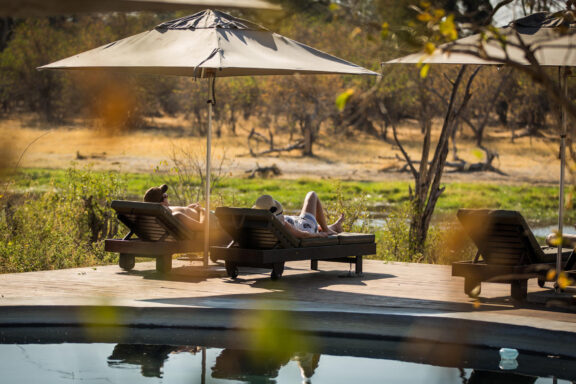
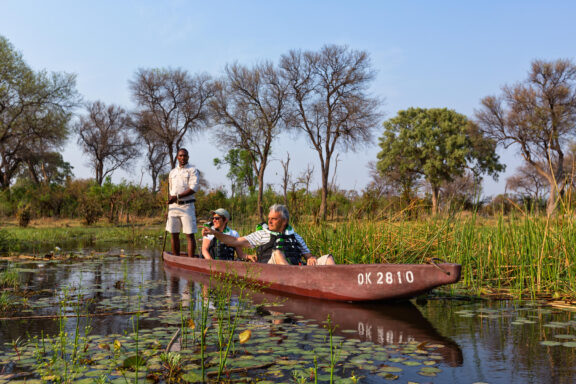
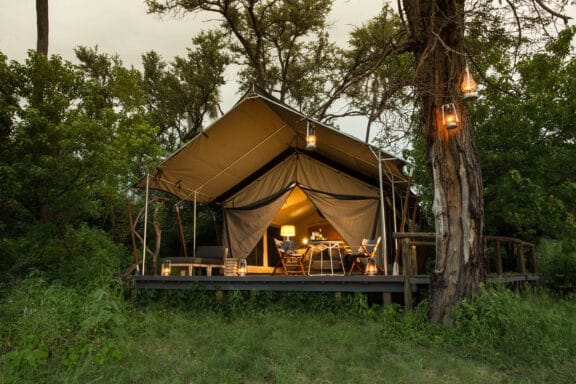
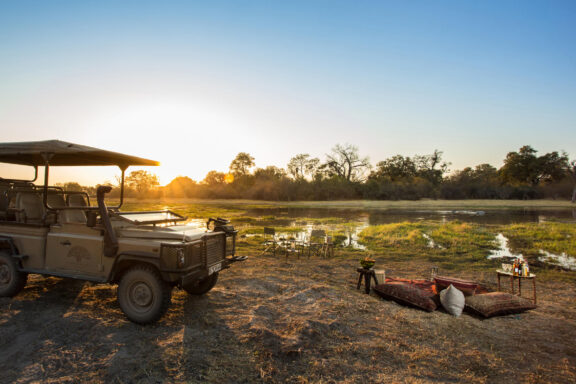
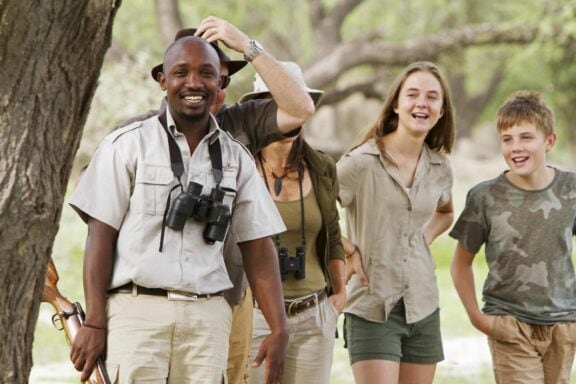
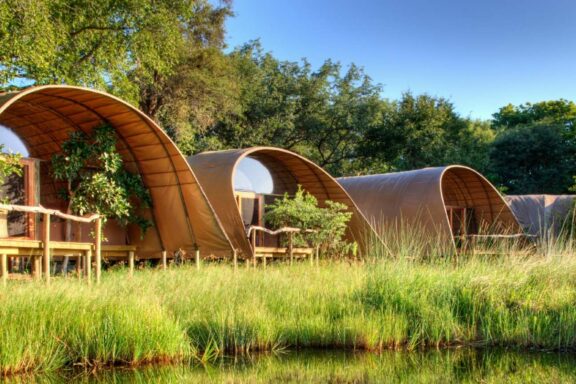
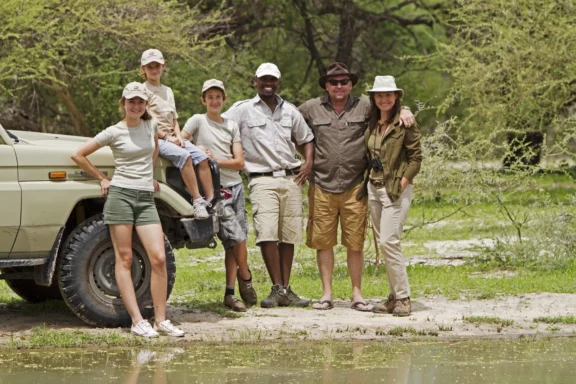
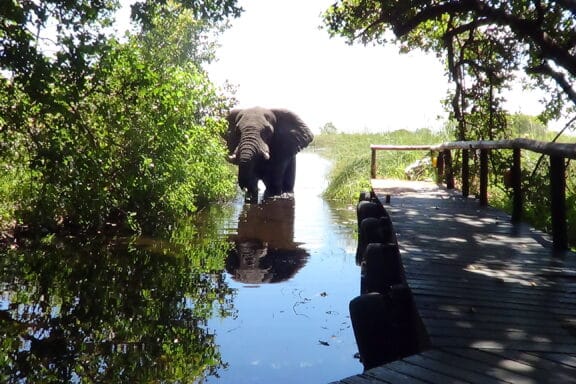








Written by Paula Rabeling
• Travel Writer
Part of the Botswana Safari Collection